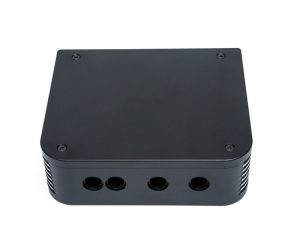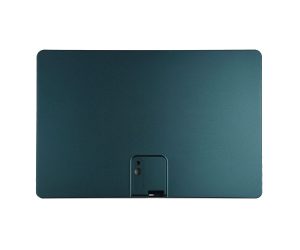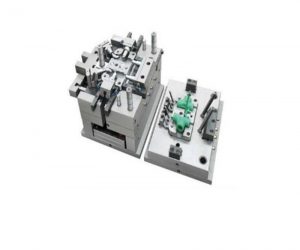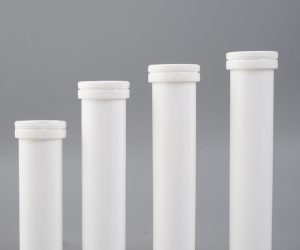The future of injection molding is not a predetermined path; it's a vast, uncharted territory brimming with both promise and peril. The successful navigation of this landscape will depend on the industry's ability to embrace innovation, prioritize sustainability, and cultivate a highly skilled, adaptable workforce. Failure to do so risks not only the industry's future but also the broader societal implications of a world increasingly reliant on plastic. The stakes are high, and the outcome remains uncertain.
I. Epistemological Genesis and Technological Paradigm Shift
The archaeological narrative of injection molded plastic transcends mere mechanical innovation, representing a profound technological metamorphosis that has fundamentally recalibrated industrial production architectures. Emerging from the crucible of late 19th-century engineering experimentation, this manufacturing modality has evolved from a nascent technological prototype to a sophisticated, ubiquitous manufacturing paradigm.
Quantum Technological Dimensions:
- Historical Emergence: 1872 - Primordial Technological Inflection
- Transformative Potential: Radical Manufacturing Reconfiguration
- Systemic Impact: Comprehensive Industrial Restructuring
II. Phenomenological Process Dynamics
The injection molding process represents a complex choreography of material science, thermodynamic manipulation, and precision engineering. This intricate methodology transforms polymeric substrates through a meticulously orchestrated sequence of thermal, mechanical, and structural transmutations.
Procedural Architectural Components:
- Material Quantum Preparation
- Topological Mold Engineering
- Thermoplastic Phase Transition
- Structural Solidification Protocols
- Geometric Extraction Mechanisms
III. Multidimensional Industrial Convergence
The technological plasticity of injection molding manifests across diverse industrial ecosystems, each sector leveraging its transformative capabilities through unique technological adaptations:
A. Automotive Technological Ecosystem
- Structural Optimization
- Mass Reduction Strategies
- Performance Enhancement Protocols
B. Biomedical Innovation Landscape
- Precision Engineering
- Biomaterial Compatibility
- Advanced Therapeutic Infrastructures
C. Consumer Technology Domains
- Ergonomic Design Paradigms
- Scalable Production Methodologies
- User Experience Engineering
Technological Implications and Future Trajectories:
The injection molded plastic technological paradigm continues to evolve, driven by:
- Advanced Materials Research
- Computational Design Methodologies
- Sustainable Manufacturing Imperatives
- Artificial Intelligence Integration
- Nanoscale Engineering Innovations
Concluding Technological Perspective:
Injection molded plastic transcends traditional manufacturing conceptualizations, representing a dynamic, adaptive technological ecosystem that continually redefines industrial production's fundamental architectures.
The narrative of injection molding is not merely a story of manufacturing technique, but a profound exploration of human technological potential, where material science, engineering precision, and innovative thinking converge to reshape our technological landscape.
IV. Paradigm Shifts in Injection Molding: A Nexus of Innovation
A. The Symbiotic Dance of Additive and Fabricación por usinado: The convergence of additive manufacturing (AM) – specifically, 3D printing – and injection molding transcends mere technological synergy; it represents a fundamental shift in manufacturing paradigms. AM's capacity for rapid prototyping and bespoke mold creation empowers injection molding to achieve previously unattainable levels of complexity and customization. This isn't simply an enhancement of existing processes; it's a generative leap, enabling the fabrication of intricately designed, personalized components at previously unimaginable scales and speeds. The resulting disruption ripples across diverse sectors, challenging established manufacturing norms and fostering a new era of design freedom. The implications extend beyond mere efficiency gains; they redefine the very possibilities of material manipulation and product realization.
B. Sustainability's Imperative: Navigating the Ecological Tightrope: The injection molding industry faces a critical juncture: reconciling its inherent productivity with the urgent demand for environmental responsibility. The transition to a truly sustainable model demands more than superficial adjustments; it necessitates a systemic overhaul. While closed-loop recycling and bioplastic integration represent crucial steps, the true challenge lies in optimizing the entire lifecycle, from material sourcing to end-of-life management. The industry's future hinges on its ability to navigate this complex ecological tightrope, balancing economic viability with environmental integrity. Failure to do so will not only jeopardize its long-term sustainability but also undermine its contribution to a broader, globally sustainable future.
C. Hyper-Personalization: From Mass Production to Mass Customization: Injection molding's inherent versatility has fueled a paradigm shift from mass production to mass customization. This isn't merely about offering a range of options; it's about delivering products precisely tailored to individual needs and preferences. This necessitates sophisticated integration of CAD, AM, and advanced process control systems, creating a dynamic, responsive manufacturing ecosystem. The implications are profound, extending beyond enhanced user experience to encompass the very nature of product design and consumer engagement. The industry's success in this arena will be determined by its ability to anticipate and adapt to ever-evolving consumer demands and technological advancements.
V. Case Studies and Strategic Imperatives: Navigating the Complexities of Success
A. Deconstructing Success: A Critical Analysis of Leading Brands: The success of leading brands utilizing injection molding isn't merely a testament to the technology itself; it's a reflection of strategic foresight, operational excellence, and a deep understanding of market dynamics. Analyzing these success stories requires moving beyond superficial narratives of innovation to delve into the specific strategies, technological choices, and organizational structures that underpin their achievements. This critical examination reveals not only the potential of injection molding but also the critical factors that differentiate success from failure.
B. Navigating the Charybdis of Manufacturing: Overcoming Challenges and Mitigating Risks: The path to success in injection molding is fraught with challenges, ranging from material science complexities and intricate mold design to unpredictable supply chain disruptions and unforeseen production bottlenecks. Examining these challenges through a lens of risk management and strategic mitigation reveals the importance of robust planning, proactive problem-solving, and a commitment to continuous improvement. It's in confronting these obstacles that the true resilience and adaptability of the industry are revealed.
C. Charting the Future: Emerging Markets and Uncharted Territories: The future of injection molding extends beyond established markets; it lies in identifying and capitalizing on emerging opportunities within rapidly evolving sectors. From the burgeoning demand for sustainable solutions in developing economies to the disruptive potential of technologies like renewable energy and advanced medical devices, the industry's future trajectory depends on its ability to anticipate and adapt to these dynamic shifts. A proactive, forward-looking approach, coupled with strategic investments in research and development, will be crucial in navigating this uncharted territory and securing a position of leadership in the years to come.
VI. The Injection Molded Plastic Paradigm: A Chasm of Technological Convergence and Unforeseen Consequences
A. Emerging Technologies: A Cambrian Explosion of Innovation and Disruption
The future of injection molding isn't merely an evolution; it's a chaotic, unpredictable explosion of technological convergence. Materials science, no longer a passive participant, is actively rewriting the rules of polymer chemistry, yielding materials with properties previously relegated to science fiction. Industry 4.0 isn't a gentle integration; it's a forceful upheaval, with AI-driven predictive modeling, autonomous robotic systems, and blockchain-secured supply chains fundamentally reshaping the manufacturing landscape. The convergence of additive and subtractive manufacturing isn't simply additive; it's a synergistic dance of precision and scale, blurring the lines between design and production, potentially leading to unforeseen material and process optimizations, and perhaps even entirely novel manufacturing paradigms. This isn't incremental progress; it's a paradigm shift, fraught with both immense potential and unpredictable consequences.
B. Economic and Environmental Crossroads: A Tightrope Walk Between Prosperity and Planetary Health
The economic impact of injection molding is undeniable – a cornerstone of global manufacturing, driving efficiency and competitiveness. However, this success has come at a cost. The environmental reckoning is upon us, demanding a radical re-evaluation of our relationship with plastic. Sustainability is no longer a desirable add-on; it's a non-negotiable imperative. The industry faces a stark choice: adapt and innovate, embracing bioplastics, closed-loop recycling systems, and circular economy models, or face obsolescence and the wrath of a planet pushed to its limits. This isn't merely about reducing waste; it's about redefining the very essence of manufacturing, forging a path towards a truly sustainable future – a future that may require a complete overhaul of existing infrastructure and supply chains.
C. Forging the Future Workforce: A Crucible of Skills and Adaptability
The injection molding industry's future hinges on its ability to cultivate a workforce capable of navigating this complex, rapidly evolving technological landscape. Education and training must transcend rote learning; they must foster critical thinking, problem-solving skills, and a deep understanding of the interconnectedness of materials science, manufacturing processes, and environmental sustainability. This isn't simply about training technicians; it's about cultivating a generation of adaptable, innovative thinkers capable of anticipating and responding to the unforeseen challenges and opportunities that lie ahead. The lack of such a workforce could cripple the industry's ability to capitalize on the advancements described above, leading to a missed opportunity on a global scale.
VII. Conclusion: Navigating the Uncharted Waters of a Transforming Industry
This exploration has revealed injection molding not as a static technology, but as a dynamic, ever-evolving force, constantly reshaping the world around us. We've witnessed its transformative power, its pervasive applications, and the disruptive innovations poised to redefine its future. Understanding this evolution isn't merely academic; it's crucial for navigating the complexities and harnessing the potential of this pivotal industry.
Frequently Asked Questions (FAQs)
Sure, here's the revised text with a more natural human language style:
1. What are the key advantages of using injection molded plastic over traditional manufacturing methods?
Injection molded plastic has several significant benefits compared to traditional manufacturing techniques:
Versatility: Injection molding allows for the creation of complex and intricate parts with a high degree of design flexibility.
Efficiency and Speed: The process is highly automated, enabling rapid and cost-effective mass production of parts.
Precision and Repeatability: Injection molding ensures consistent, precise, and high-quality outputs with tight tolerances and minimal waste.
Material Diversity: Manufacturers have a wide range of plastic materials to choose from, each with unique properties tailored to specific needs.
Lightweight and Durable: Injection molded plastic parts are generally lightweight yet strong and durable, making them ideal for applications where weight and strength are critical factors.
These advantages make injection molded plastic an essential solution across various industries, including automotive, consumer goods, medical, and aerospace.
2. How is the injection molding process carried out, and what are the key steps involved?
The injection molding process involves several precise steps to transform raw plastic materials into the desired product:
Material Preparation: The plastic resin is dried, heated, and melted into a viscous, liquid state.
Mold Design and Engineering: A custom mold is created using advanced CAD software and CNC machining to define the part's shape and features.
Injection and Filling: The molten plastic is injected under high pressure into the mold cavity, completely filling it.
Cooling and Solidification: The plastic cools and solidifies within the mold, taking on the exact shape of the cavity.
Part Ejection: Once the part has hardened, it is automatically ejected from the mold, ready for further processing or assembly.
Throughout this process, various monitoring and control systems ensure the consistent quality and accuracy of the injection molded parts.
3. What are some of the key industries and applications that have been transformed by injection molded plastic?
Injection molded plastic has significantly impacted a variety of industries, including:
Automotive: It has enabled the cost-effective production of complex, lightweight automotive components, both interior and exterior.
Medical and Healthcare: Injection molding plays a crucial role in developing medical devices, prosthetics, and other healthcare-related products.
Consumer Goods and Packaging: This technology has revolutionized the production of household items, consumer electronics, and plastic packaging.
Aerospace and Defense: These sectors utilize injection molded plastic for lightweight, high-performance structural parts and specialized equipment.
In each of these industries, the versatility, precision, and efficiency of injection molding help manufacturers deliver innovative, customized products that meet evolving customer needs.
4. How are advancements in additive manufacturing and sustainability impacting the injection molding industry?
The injection molding industry is being revolutionized by two key innovations:
Additive Manufacturing and Injection Molding:
The integration of 3D printing and injection molding allows for rapid prototyping and production of custom molds and tooling, speeding up the product development process.
This combination of additive and subtractive manufacturing techniques opens up new possibilities for personalization, customization, and the creation of complex, innovative products.
Environmental Sustainability:
Manufacturers are adopting closed-loop recycling systems, exploring bioplastics and recycled materials, and implementing energy-efficient production methods to reduce the environmental impact of injection molding.
These sustainable practices align with the growing global demand for eco-friendly products, positioning injection molded plastic as a key contributor to a more sustainable future.
These advancements in additive manufacturing and sustainability are transforming the injection molding industry, enabling it to offer more innovative, customized, and environmentally responsible solutions.



